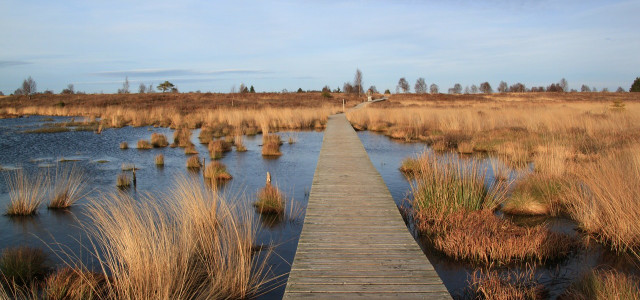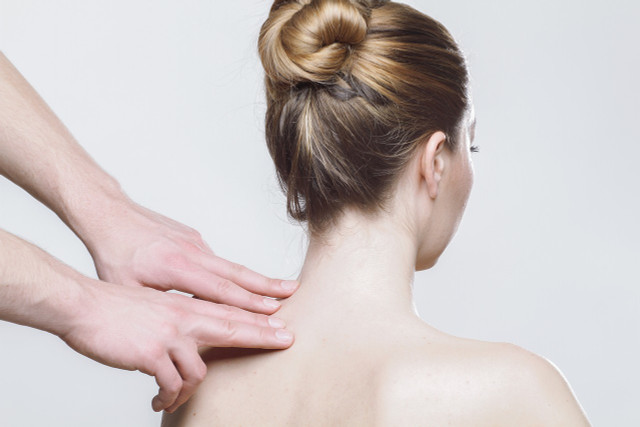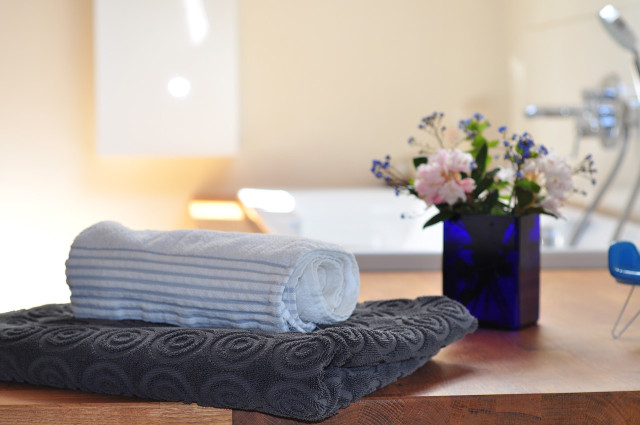
A mud bath contains many important vital substances that have a positive effect on body and mind. Here you can find out how the natural remedy works and how you can use it.
Bogs are created by biological processes in nature that are thousands of years old. Lowlands and small valleys fill up with water that cannot escape due to the nature of the soil. If plant remains get into this biotope, they are decomposed with minerals in the absence of air and peat is formed.
Bathing peat, which contains certain inorganic and organic components, is used for the so-called healing moors. Since the substance is particularly rich in nutrients, bathing peat is considered a particularly effective natural healing product.
Mud baths are said to have a positive effect on the body and health. Since the bath also has a relaxing effect, it is one of the most popular wellness treatments. But you can not only take a mud bath as part of a cure – you can also use it at home.
Nevertheless, you should keep in mind that peat extraction requires an intervention in the natural moors. This can harm the environment.
Moor bath: how it affects the body

(Photo: CC0 / Pixabay / whitesession)
In a mud bath, the bathing peat is heated to around 40 to 45 degrees. The heat increases the body temperature by up to two degrees. In this way, an artificial healing fever is created. The body reacts to this by mobilizing its defenses and thus strengthening the immune system and self-healing powers. In addition, blood circulation is stimulated, which relieves tension. The activated metabolism also helps the body to purify and detoxify.
The mud bath not only ensures that numerous physical processes are stimulated. It also helps you find calm and relax. The heat relieves pain, relaxes the muscles and has a calming effect. According to a study by the University of Munich, mud baths in combination with a stress management seminar, relaxation training and exercises can also prevent burnout.
Mud baths are also rich in important active ingredients. These can be absorbed through the skin and thus affect physical health and well-being. A mud bath contains these nutrients, among others:
-
Magnesium: The mineral has an antispasmodic and relaxing effect on the body. It is also said to influence the muscles – so a mud bath is particularly good for relieving tension. The magnesium it contains is also said to reduce stress.
-
Calcium is particularly important for bone health. For this reason, mud baths are well suited for osteoporosis patients.
-
Iron supports a variety of bodily functions. Among other things, the body needs it to produce the red blood pigment hemoglobin. This is responsible for transporting oxygen in the blood.
-
Copper: The trace element has an anti-inflammatory effect and can help alleviate rheumatic diseases. It also supports the absorption of iron and has a positive effect on the immune system.
-
Silicic acid: The silicic acid contained in the moor stimulates blood circulation and the metabolism of the skin. This can improve the complexion, smooth wrinkles and reduce cellulite.
-
Humic acid: The humic acid contained in the mud bath binds excess stress hormones. Not only can it have a relaxing effect, it can also have a detoxifying and anti-inflammatory effect. It is also said to increase the production of antibodies and have an antiviral and antibacterial effect. These effects help make you less susceptible to disease.
Using the mud bath correctly: You have to pay attention to this

(Photo: CC0 / Pixabay / ASasch)
You can take a mud bath as part of a cure or a wellness day. With bathing peat from pharmacies or health food stores, you can also enjoy it in the bathtub at home. The principle is the same in both cases – but you should pay attention to a few differences:
Under professional conditions, a mud bath takes about 20 to a maximum of 30 minutes. The peat used is rather viscous and stores the heat of the water particularly well. Since circulatory problems can occur during use, the relaxation baths are carried out under supervision.
Purchased bathing peat is usually a little thinner. As a result, the heat cannot be retained quite as well and the bath may not be quite as effective. However, make sure that the temperature does not exceed 40 degrees and that you bathe for 10 minutes, but never longer than 20 minutes. If you take a peat bath at home, you should not induce a therapeutic fever – especially if you take the bath unsupervised.
After the mud bath, rinse your body under the warm shower. You should then rest for about an hour so that your circulation is not overloaded. This gives the organism time to recover. It is particularly important that you keep warm and do not freeze. Otherwise the mud bath will be counterproductive.
Danger:
- Under no circumstances should you take the bath if you have open wounds or suffer from weeping eczema.
- Even with serious illnesses such as cancer or cardiovascular problems, it is better to avoid the mud bath.
- Since the active ingredients in peat affect the hormone balance, you should not take a mud bath during pregnancy.
Mud bath: good for your health, bad for the environment
As beneficial as mud baths can be, they unfortunately present us with an ecological problem. The mud bath is good for your health, but bad for the environment. The peat required for this is a decomposition product that is produced when moors are drained.
Incentives for this initially came from agriculture, because the damp soil was inaccessible and unusable for humans. Bogs were therefore drained and the peat used as fuel or for spas.
However, a valuable CO2 store is lost in the process. Intact moors absorb more carbon than forest areas of the same size. However, NABU estimates that around 95% of all original moor areas in Germany are considered “dead”.
In order to protect other moor areas, we should only use moor baths for therapy in urgent cases. It is worth looking for alternatives in the interests of the environment.
Read more on Techzle.com:
- Make a cold bath yourself: Mixtures for soothing baths
- Silica – superfluous powder or effective remedy?
- Detoxify your body: Naturally and without expensive tools
- Clean the bathtub: these home remedies will help
Source: Stier-Jarmer M, Frisch D, Oberhauser C, Immich G, Kirschneck M, Schuh A. Effects of single moor baths on physiological stress response and psychological state: a pilot study. Int J Biometeorol 2017;61(11):1957-1964; doi: 10.1007/s00484-017-1385-2.